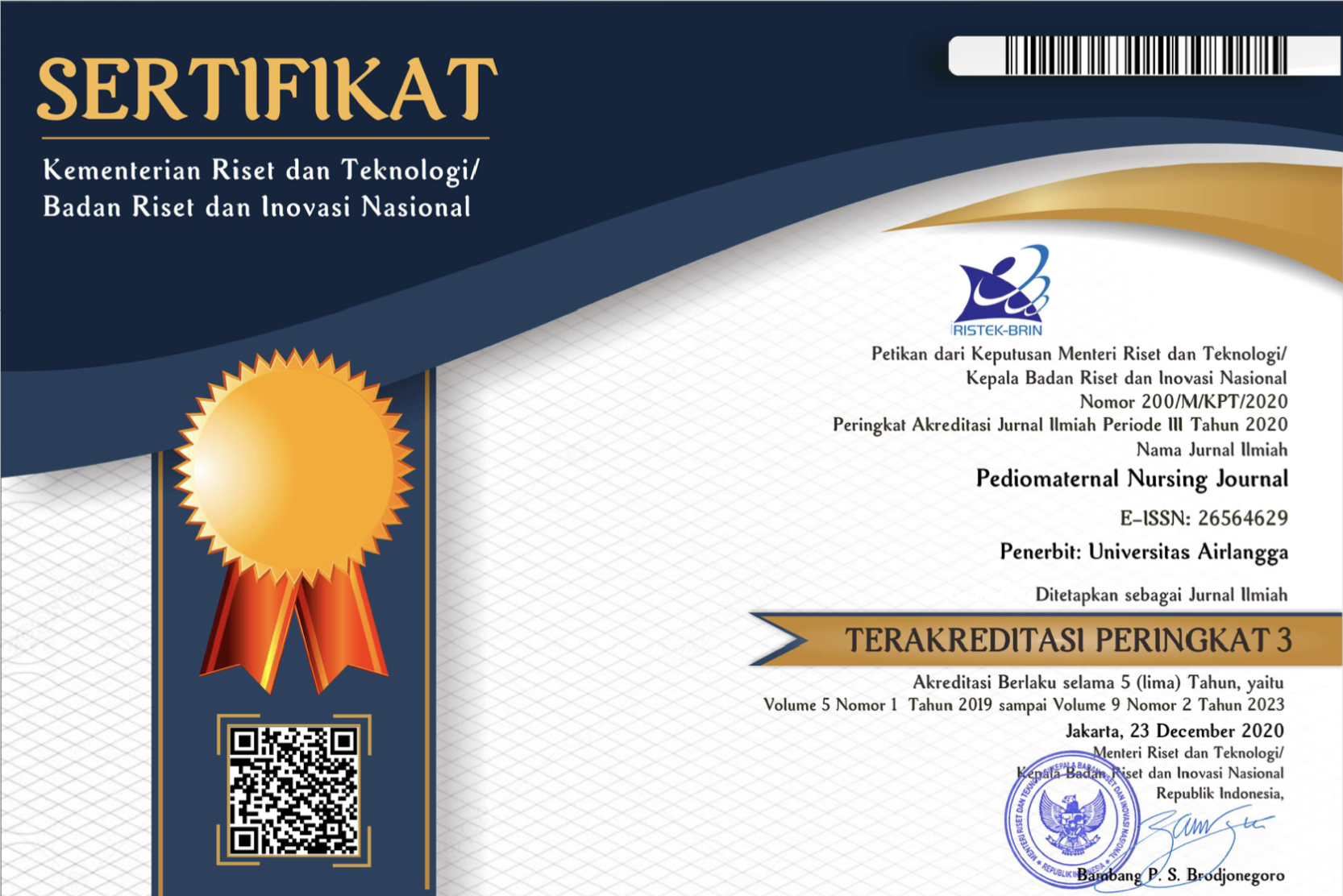ANALISIS FAKTOR TINDAKAN IBU DALAM PEMBERIAN NUTRISI PADA BALITA DENGAN GIZI BURUK
Downloads
countries. The Lack of nutrition in children can be caused by the attitude or behavior of the mother which is the factor in
the selection of improper feeding. The food selections, adequate availability of the food and food diversities influenced by
the mother's level of knowledge about meals and nutritions.The objective of this research was to perceived
relation between predisposing factors adn reinforcing factors that related to mother's action in giving nutrition to
children with malnutrition. This research used cross sectional design. The population was 22 mothers which has a
children between 1-3 years old with malnutrition. Data were collected by using a questionnaire an interview with the
respondents. Data were the anakyzed using spearmen's rho test with level of significance of <0,05. The result
showed that between predisposing factors (Attitude, education level, knowledge) and reinforcing factors (health service
support and family support), knowledge level had possitive correlation with mother's action in giving nutrition to
children with malnutrition (p=0,01, r=0,656), education level also had possitive correlation with mother's action in
giving nutrition to children with malnutrition (p=0,35, r=0,452), and the knowledge was the most dominant factors that had
possitive correlation with mother”s action in giving nutrition to children with malnutrition. It can be concluded that
the knowledge an educational level can influenced mother's action in givin nutritions to children with malnutrition.
Increase mother's aspect in knowledge can be used to improve the possitive attitude in giving nutritions to
malnutritions children. Health promotion about malnutritions with the malnutrition mother's as main targets can be
used as alternative ways to improve mother's knowledge.
Notoatmodjo, S, (2003). Pendidikan Dan Perilaku Kesehatan. Jakarta : Rineka Cipta
Copyright (c) 2014 Ade Sugih Herlambang, Yuni Sufyanti Arief, Ilya Krisnana

This work is licensed under a Creative Commons Attribution 4.0 International License.
1. The journal allows the author to hold the copyright of the article without restrictions.
2. The journal allows the author(s) to retain publishing rights without restrictions.
3. The legal formal aspect of journal publication accessibility refers to Creative Commons Attribution (CC BY).





















